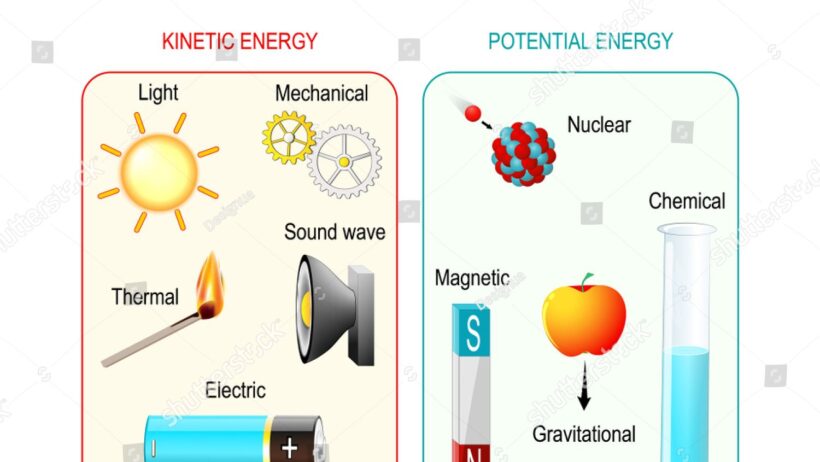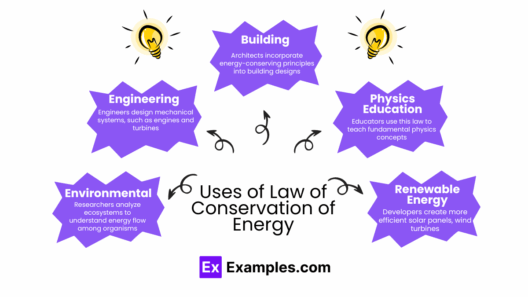Energy is a fundamental concept that pervades every aspect of our universe. Among the myriad forms of energy, two integral types are kinetic energy and potential energy. These forms, while distinct, are inextricably linked and continuously transform into one another, creating a delicate balance that sustains various natural processes. Understanding how kinetic and potential energy are conserved is paramount in numerous fields, from physics to environmental science, where the implications of energy conservation can significantly affect climate change mitigation strategies.
Kinetic Energy: The Energy of Motion
Kinetic energy refers to the energy possessed by an object due to its motion. The kinetic energy (KE) of an object can be quantitatively assessed using the formula KE = 1/2 mv², where “m” represents mass, and “v” denotes velocity. This equation underscores the relationship between mass, velocity, and kinetic energy. As the velocity of an object increases, its kinetic energy escalates exponentially because it is squared in the formula, highlighting the immense energy shifts that can occur with increased speed.
Every day, we observe kinetic energy in action. When a car speeds down a highway, when a soccer ball is kicked across a field, or when a river flows vigorously, kinetic energy is at play. The conservation of kinetic energy is essential in various mechanical systems. In an ideal scenario devoid of friction, the total kinetic energy remains constant. However, in real-world scenarios, forces such as friction dissipate kinetic energy as thermal energy, showcasing the importance of understanding energy transfer and conservation in practical applications.
Potential Energy: Energy of Position
Conversely, potential energy (PE) refers to the stored energy an object possesses due to its position, arrangement, or state. The most classical example is gravitational potential energy, which can be expressed through the formula PE = mgh, where “h” is the height above a reference point. In simple terms, the higher an object is positioned above the Earth, the greater its potential energy. This form of energy can also manifest in various other dimensions, such as elastic potential energy in springs or chemical potential energy within molecules.
A quintessential illustration of potential energy is a boulder poised at the edge of a cliff. As one nudges the boulder, it transforms its stored potential energy into kinetic energy, spiraling downwards as it accelerates. This transformation vividly illustrates the dynamic interplay between kinetic and potential energy, emblematic of energy conservation principles in action. Potential energy serves not only as a foundational principle in mechanics but also as a pivotal player in various ecological systems, where energy storage is crucial for organisms’ survival and environmental stability.
The Principle of Conservation of Energy
The principle of conservation of energy posits that energy cannot be created or destroyed; it can only be transformed from one form to another. This principle is vital in understanding the interplay between kinetic and potential energy. In an isolated system, the total mechanical energy—the sum of kinetic and potential energy—remains constant. For instance, consider a swinging pendulum. At its highest point, the pendulum possesses maximum potential energy and minimal kinetic energy. As it swings downwards, potential energy is converted into kinetic energy, reaching maximum kinetic energy at the lowest point of its path before ascending again. Each cycle demonstrates the elegant dance of energy forms, continuously flowing yet conserving the total energy within the system.
Real-World Implications of Energy Conservation
The conservation of energy principles extend beyond mere physics into daily life and environmental issues. Consider renewable energy technologies, such as hydroelectric power plants. These systems utilize the gravitational potential energy of water stored at height, transforming it into kinetic energy as it flows downwards, which in turn drives turbines to generate electricity. Such methods exemplify energy conservation strategies that harness natural processes without depleting resources.
The importance of conserving energy also resonates with climate change discussions. By understanding the dynamics of energy transformation, we can implement more effective strategies for reducing carbon footprints. For example, energy-efficient appliances operate on principles of energy conservation, utilizing less energy while still providing the necessary functionality. Society’s transition towards sustainable practices hinges upon a profound comprehension of energy forms and their conservation, additionally fostering innovations such as energy storage systems that can harness potential energy for later use.
Conclusion: The Balance of Energy Forms
Kinetic and potential energy represent two sides of the same coin, continuously interacting in a multitude of contexts, from the mechanical systems of our daily lives to the broader ecological frameworks that sustain our planet. The conservation of these energy forms is not merely an abstract scientific principle; it is a foundational tenet that underpins countless natural phenomena and technological applications, rendering it essential for advancing our understanding of both physics and environmental stewardship. As the world grapples with the challenges posed by climate change, an in-depth appreciation of these energy dynamics will undoubtedly empower individuals and societies to foster sustainable practices that honor the intricate balance of energy in our ecosystem.







